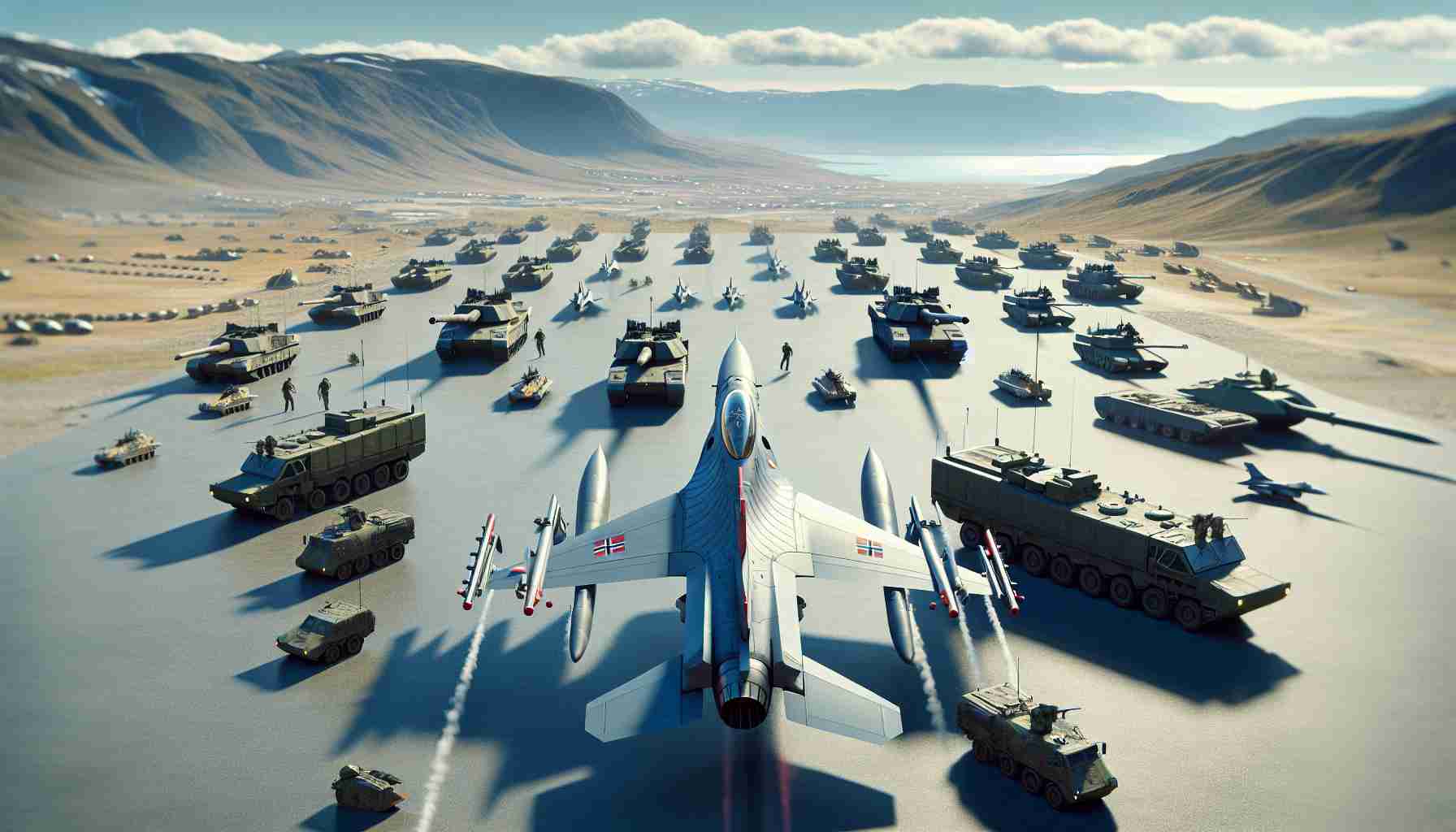In a significant move, the Norwegian government has committed over $85.9 million to support Ukraine’s defense by supplying essential equipment and weaponry for F-16 fighter jets. The delivery of these aircraft is anticipated by the close of the year.
During an event in Odesa, Norwegian Defense Minister Bjørn Arild Gram, alongside his Ukrainian counterpart Rustem Umerov, emphasized that the inaugural batch of F-16s would reach Ukraine within the year. This critical supply is not just about the jets themselves; Ukraine will also require vital components and weapon systems to effectively operate them. To address this, Norway has earmarked NOK 1.3 billion specifically for acquiring these necessary additions.
Further discussions between the two defense leaders covered a broad spectrum of defense strategies. Topics included bolstering air defense measures and supplying missile systems. Moreover, they explored opportunities for investing in Ukraine’s defense industry, pointing towards sustained cooperation and support.
Aside from strategic talks, the ministers also took time to visit a military rehabilitation center in Odesa, highlighting the humanitarian aspect of defense collaboration.
The latest reports confirm that Norway is preparing to deliver six F-16 fighter jets to Ukraine soon, marking a crucial step in enhancing the country’s military capabilities. This gesture of solidarity showcases Norway’s commitment to supporting its allies amid ongoing regional tensions.
Unexpected Twists in Global Defense: Norway’s F-16s to Ukraine Shake Up Strategies and Alliances
In the context of global defense dynamics, the decision by Norway to provide F-16 fighter jets to Ukraine raises several impactful questions and considerations that transcend the immediate headline. While the direct infusion of $85.9 million and the delivery of F-16s underline Norway’s commitment to Ukraine’s defense, let’s delve into the broader implications that are reshaping regional and international landscapes.
Impact on Global Military Alliances
The transfer of F-16 fighter jets to Ukraine is more than a military transaction; it serves as a powerful statement about shifting alliances and geopolitical interests. As Russia’s influence continues to loom over Eastern Europe, countries like Norway are underscoring NATO’s supportive network for Ukraine. However, the move transcends mere military support, signaling the potential realignment of countries traditionally seen as neutral or balanced.
Advantages and Disadvantages of the Military Support
One pronounced advantage of this support is the demonstrable enhancement of Ukraine’s defense capabilities, potentially serving as a deterrent against further aggression. Additionally, the collaboration might accelerate technological exchanges and cooperation in defense production, boosting Ukraine’s industrial capacities.
Conversely, the disadvantages cannot be ignored. There is the risk of escalating tensions with Russia, which may perceive this move as a provocation. It also amplifies the arms race mentality in the region, potentially prompting neighboring countries to step up their military investments as well.
The Economic Flip Side
Amid the military focus, another layer of impact lies in economic commitments. Norway’s investment extends into areas of air defense and missile systems, but this also poses economic questions for Ukraine. How will this substantial military investment be balanced against other pressing economic needs during a time of conflict and recovery?
Controversies and Critiques
Critics argue that such substantial military support may entrench conflict rather than leading to diplomatic resolutions. Additionally, the dependency on foreign military aid might overshadow the importance of building internal security mechanisms and could create long-term financial burdens.
Raising Important Questions
– Could this aid open the pathway to more countries providing military support to Ukraine? It sets a precedent, potentially encouraging other nations to offer similar support.
– What long-term effects will this have on Ukraine’s defense industry? The partnership may enhance domestic military expertise and capabilities, but it could also delay development if over-reliance on external aid persists.
– How will Russia respond to this development? This is a critical consideration, as Norway’s actions might invoke retaliatory policies from Russia, affecting European security dynamics.
Conclusion and Wider Implications
Norway’s initiative not only strengthens Ukraine’s defensive capacities but also serves as a microcosm of the evolving military and diplomatic relations in Europe. While the immediate focus remains on strategic defense responses, the longer-term implications highlight a need for balance between military preparedness and diplomatic engagement.
For those interested in further exploring global defense policies and the ongoing shifts within NATO and European military strategies, consider visiting reputable sources such as NATO’s official website and Defense News for comprehensive insights and up-to-date information.






















